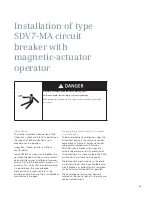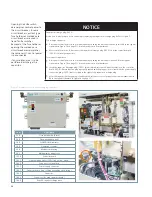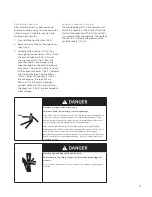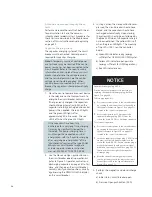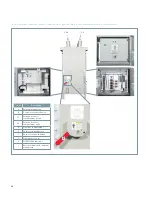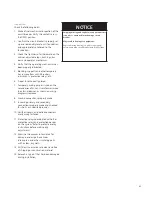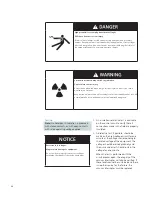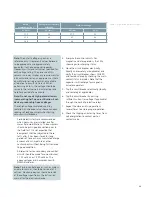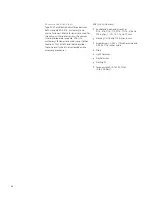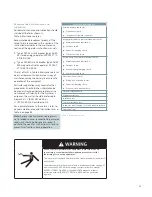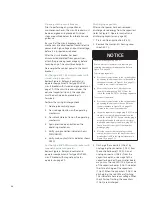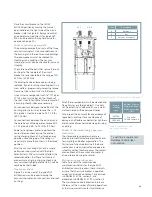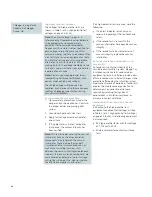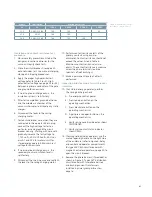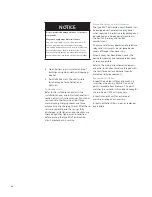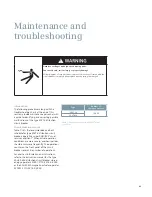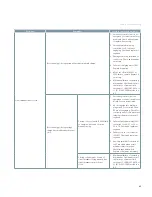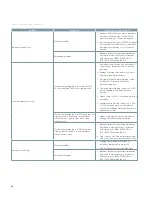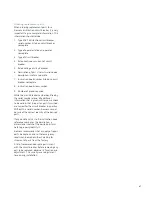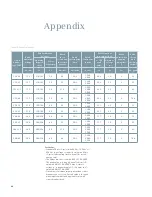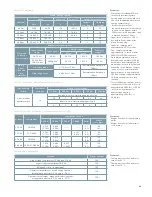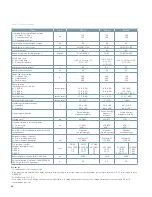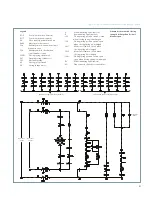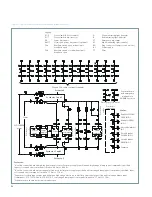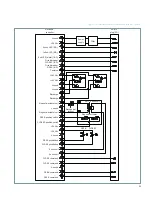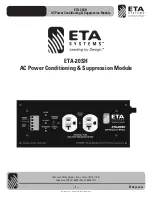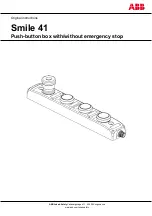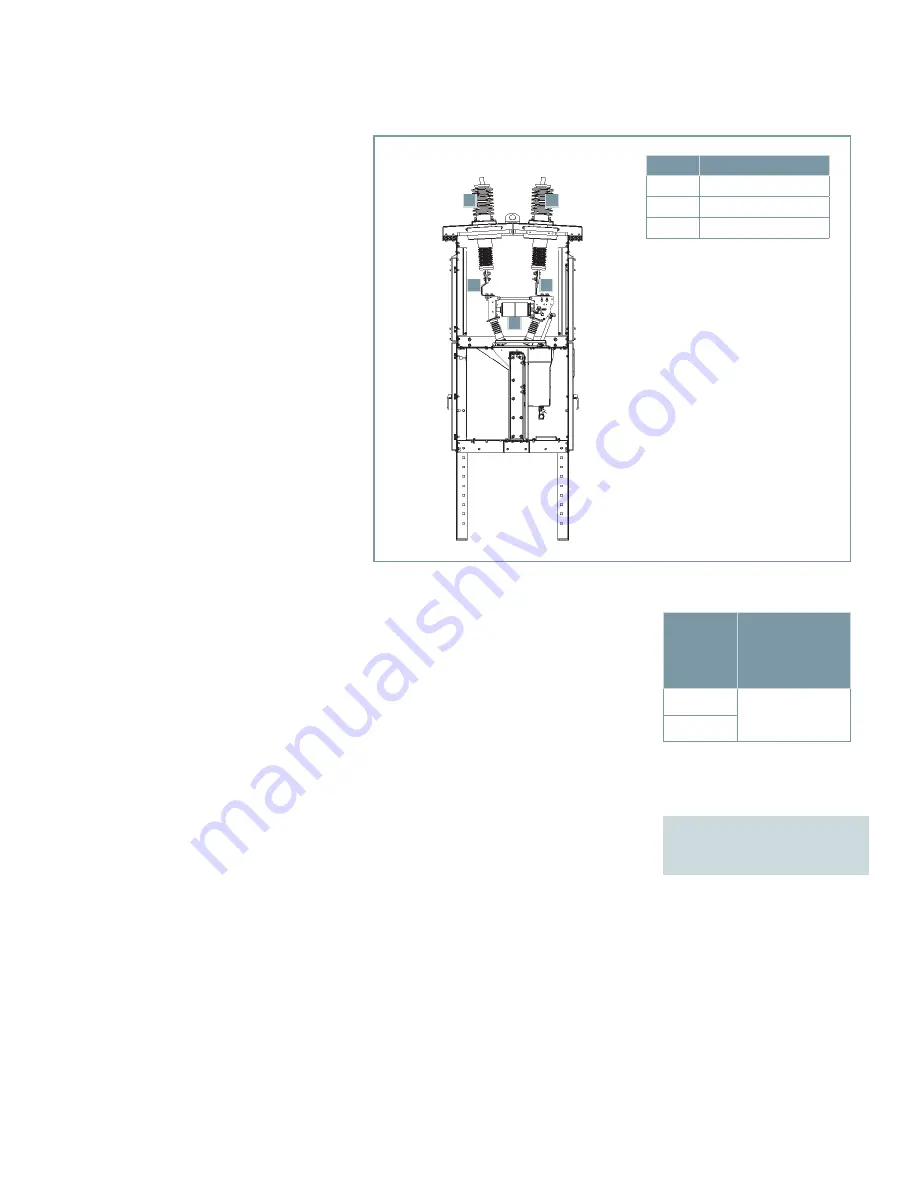
39
Place the circuit breaker in the CLOSE
BLOCKED position by moving the manual
open handle on the right side of the circuit
breaker (refer to Figure 8: Relay and control
and operator compartments for type SDV7-
MA circuit breaker with magnetic-actuator
operator on page 30.)
Checks of primary power path
The primary power path consists of the three
vacuum interrupters, six bus connections to
the bushings and the roof-mounted bushings.
These components must be checked for
cleanliness and condition. The vacuum
interrupters must also be checked for vacuum
integrity.
Check torque of the bolts that secure the roof
bushings to the top plate of the circuit
breaker. Torque should be in the range of 20-
25 ft-lbs (27-34 Nm).
If a bushing has been removed or is being
replaced, tighten bushing mounting bolts in a
cross pattern, progressively increasing torque
from one-third to two-thirds to full torque.
Use anti-seize compound (Loctite* 77164 or
77124 nickel anti-seize) on the threads of
the roof studs to facilitate future removal of
a bushing should it become necessary.
For connections between the bottom of the
bushing and the bus bar, torque the
1
/
2
-13
SAE grade 5 steel hardware to 50-75 ft-lbs
(80-102 Nm).
For connections between the bus bars and
the pole heads of the operator, torque M12
x 1.75 grade 8 bolts to 52 ft-lbs (70 Nm).
Some test engineers prefer to perform the
contact erosion check during the manual
spring charging check of the stored-energy
operator, since charging of the springs is
necessary to place the contacts in the closed
position.
Also, the vacuum integrity check is usually
performed in conjunction with the High
Potential tests. These instructions follow the
recommendation that these tests contact
erosion/manual spring charging check, and
vacuum integrity/high-potential tests) will be
combined as described.
Cleanliness check
Figure 9 is a side view of the type SDV7
distribution circuit breaker showing the
vacuum interrupter, bus connections and roof
bushings.
All of these components must be cleaned and
free of dirt or any foreign objects. Use a dry
lint-free cloth. For stubborn dirt, use a clean
cloth saturated with denatured alcohol.
Also inspect the bus work for any evidence of
loose bolts, bushings for any evidence of
damage, and flexible connectors for tightness
and absence of mechanical damage, burning,
or pitting.
Checks of the stored-energy operator
mechanism
The stored-energy operator checks are
divided into mechanical and electrical checks
for simplicity and better organization. The
first series of checks determine if the basic
mechanism is clean, lubricated and operates
smoothly without control power. The contact
erosion check of the vacuum interrupter is
also performed during these tasks.
Maintenance and lubrication
Table 5 presents the recommended
maintenance intervals for the type SDV7
distribution circuit breakers. These intervals
assume that the circuit breaker is operated
under “usual service conditions” as discussed
in ANSI/IEEE C37.04, section 4, and
elaborated in ANSI/IEEE C37.010, section 4.
The maintenance and lubrication interval is
the lesser of the number of closing operations
or the time interval since last maintenance.
Circuit
breaker
type
Number of years/
closing operations
(whichever comes
first)
SDV7-SE
Five-years/
10,000 operation
SDV7-MA
Figure 9: Side view of type SDV7 distribution circuit breaker
Table 5: Maintenance and
lubrication intervals
1-3-5
2-4-6
Item
Description
A
Bushings
B
Bus
C
Vacuum interrupter
A
A
B
B
C
* Loctite is a registered
trademark of Henkel
Corporation.
Summary of Contents for SDV7
Page 54: ...54 Table 16 Remarks ...
Page 55: ...55 Table 16 Remarks continued ...

